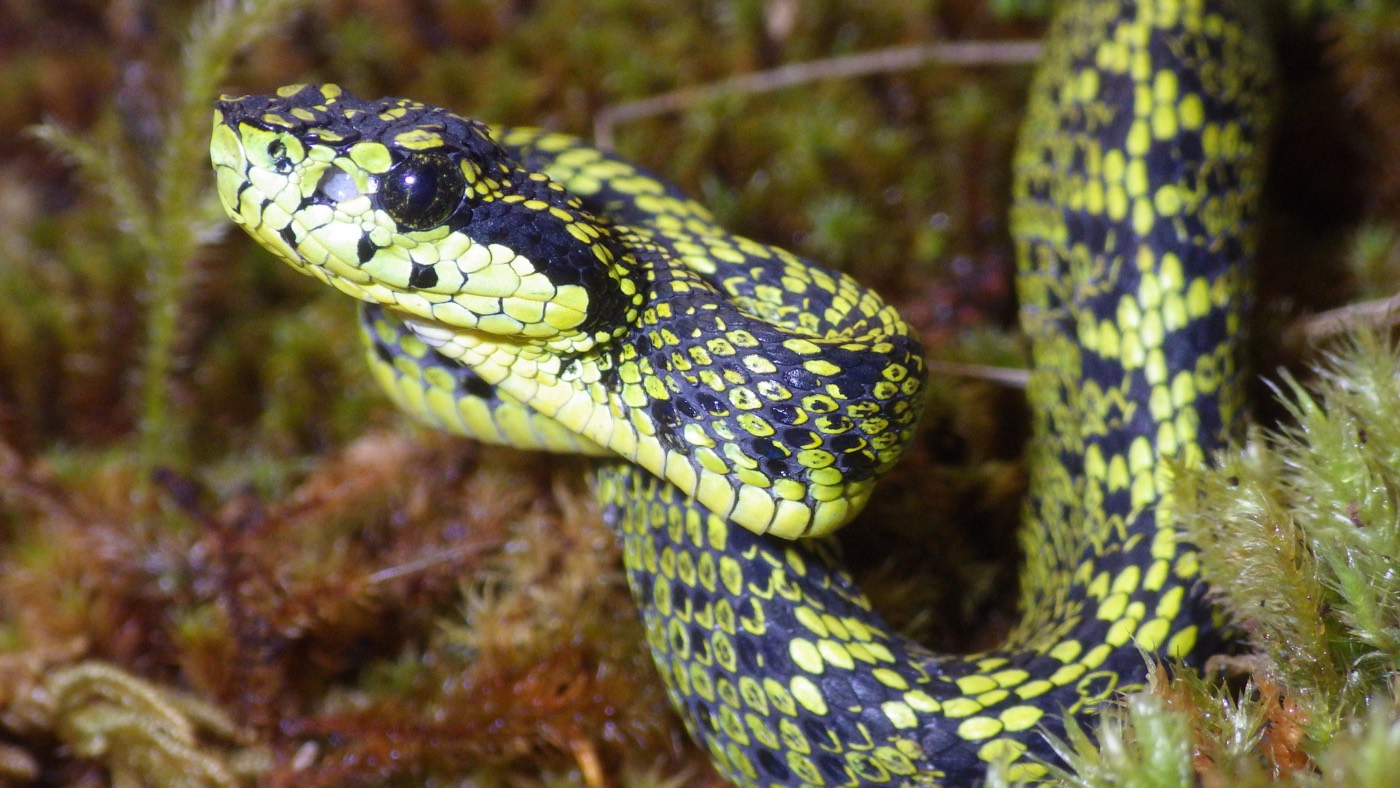New Speckled Venomous Snake Discovered in Cloud Forest

A previously unknown, green-speckled species of venomous snake has been found lurking in the high, misty forests of Costa Rica.
The Talamancan palm-pitviper (Bothriechis nubestris) was discovered through genetics. The snake, which lives in a remote, forested region of Central America, was long mistaken for a closely related species, the black-speckled palm-pitviper (Bothriechis nigroviridis). But when University of Central Florida biologist Christopher Parkinson performed a genetic analysis of the black-specked palm-pitviper, he and his team found differences between specimens, suggesting that these might be two separate species.
When two species look and behave nearly identically but are genetically distinct, it's called cryptic speciation. To uncover this particular case of cryptic speciation, Parkinson and his colleagues studied museum collections in the United States and Costa Rica, and also compared DNA from the palm-pitvipers to DNA of other Central American snakes. [The World's 6 Deadliest Snakes]
The team found that what was believed to be one species was actually two lineages. The black-speckled palm-pitviper can be found across Costa Rica's Central, Tilarán and Talamanca Cordilleras (mountain ranges). The new Talamancan palm-pitviper, in contrast, is found only in the northern and central Cordillera de Talamanca, the mountain range that sits on the border of Costa Rica and Panama.
The snake usually grows to less than 24 inches (61 centimeters) long and is patterned with black and bright green speckles. The species lives at high elevations in the cloud forests of the Cordillera de Talamanca, the researchers reported July 15 in the journal Zootaxa.
The palm-pitvipers make up an interesting group because of their neurotoxic venom. The black-speckled palm-pitviper kills with a toxin called nigroviriditoxin, Spanish and Costa Rican researchers reported in January 2015 in the journal Toxicon. This toxin had previously been found only in rattlesnakes, raising questions about whether it evolved independently in rattlers and palm-pitvipers or was present in a common ancestor of the two.
"It's certainly an interesting question, because it gets at some of the fundamental concepts in evolution," Andrew Mason, a doctoral student in biology at the University of Central Florida and one of the authors of the paper, said in a statement, describing the Talamancan palm-pitviper. "We are really interested in seeing how the venom of this new species compares to other palm-pitvipers."
Get the world’s most fascinating discoveries delivered straight to your inbox.
Original article on Live Science.

Stephanie Pappas is a contributing writer for Live Science, covering topics ranging from geoscience to archaeology to the human brain and behavior. She was previously a senior writer for Live Science but is now a freelancer based in Denver, Colorado, and regularly contributes to Scientific American and The Monitor, the monthly magazine of the American Psychological Association. Stephanie received a bachelor's degree in psychology from the University of South Carolina and a graduate certificate in science communication from the University of California, Santa Cruz.
 Live Science Plus
Live Science Plus





